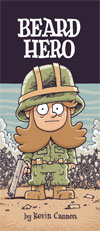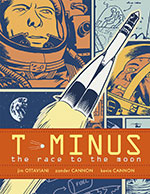Lettering in comic books has undergone a fundamental change in the last ten years, and like most changes in most artistic disciplines, it is summarized in one word: COMPUTERS.
Though you'll find the people who aesthetically prefer computer lettering to hand-lettering to be a distinct minority, the simple fact is that computer lettering is here to stay. The reasons are good ones; computers are consistent, are (relatively) easy, and allow people to do the work without having to physically work on the originals, freeing up time for the pencillers and inkers. The big advantage, then, is saving time. The big problem, of course, is a damaged aesthetic. The problems with computer lettering are twofold.
1) Artists are working on finished artwork that is inherently unfinished.
When lettering is physically done on the page, the artist has to plan in the pencilling stages where it will go. The letterer then puts the lettering down there on the page, and the inker has to then work around it. The artwork at the final stage (inking) takes into account the presence of the word balloons, even if that means nudging some elements one way or another.
With computer lettering, the artwork never goes to the letterer-- just a scan so that they can start putting the balloons down. Obviously, the penciller, who is placing all of the elements in the panel, should be thinking just as much about where the word balloons go as he would with hand-lettering, and he probably is-- it's just that his mistakes are not the inker's problem anymore. The problem is: when the finished artwork is done, inked, and colored, and everything balances, then suddenly a huge number of graphical elements --all the word balloons-- are dropped in over the top of it. Sometimes this means that huge areas of beautifully inked background elements are covered. Sometimes this means that the color/shadow balance of the panel is thrown off. It always means that one of the most important parts of the panel is not specifically planned in.
2) In the name of expediency, sometimes it's non-letterers that are doing the lettering.
Back when computers first started having the power and software to do lettering on comic artwork, certain savvy hand-letterers saw the writing on the wall, so to speak, and made at least part of their business computer-driven, creating on their computer fonts, sound effects, balloon shapes, color effects, etc. In the process, they created studios filled with people who, although they may be smart and have a good aesthetic, are not practiced letterers. This was particularly the case with comic publishers, who saw no reason to pay letterers a page rate when they can just have an intern drop the stuff in on whatever production computer they have lying around.
The effect of this move, typically, was a mismatch between the comparatively rough and organic artwork and the mathematically precise lettering and word balloons. Perfect ovals fitting around human shapes; rigidly straight balloon pointers cutting across faces; unalterable balloons sticking out of panel borders. To most people it's not terribly noticeable, but it can often have a disorienting effect, sometimes to the point of confusing the order in which balloons, and panels, should be read.
Join us next week for the:
The Scale of Lettering Aesthetics
Subscribe to:
Post Comments (Atom)






1 comment:
The letterer then puts the lettering down there on the page, This was particularly the case with comic publishers,
dissertation subjects
Post a Comment